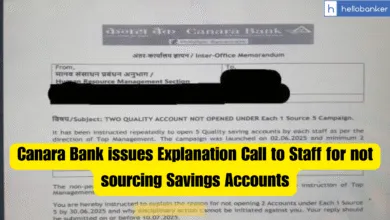IBC has helped Banks Recover Rs 10 Lakh Crore NPA

| ➡️ Get instant news updates on Whatsapp. Click here to join our Whatsapp Group. |
The Insolvency and Bankruptcy Code (IBC) has significantly improved the quality of bank assets and facilitated pre-admission settlements of over Rs 10 lakh crore in underlying debts since its inception in 2016, according to RBI Deputy Governor M. Rajeshwar Rao. Speaking at an international conclave titled “Insolvency Resolution: Evolution & Global Perspective,” held recently, Rao emphasized the importance of collaborative efforts between various stakeholders, with a focus on restructuring and revival. He also recommended conducting detailed studies on IBC cases to extract valuable insights for shaping future lending strategies.
Rao acknowledged the substantial progress achieved in cleaning up banks’ balance sheets but also pointed to potential areas where improvements could still be made. The conference, organized by the Insolvency and Bankruptcy Board of India (IBBI) in partnership with INSOL India, attracted prominent figures from the financial and insolvency sectors. The event’s discussions highlighted both the successes of the IBC and the challenges that continue to shape its application.
Transformative Potential of the IBC
IBBI Chairperson Ravi Mital, in his address, emphasized the transformative power of the IBC, describing it as a critical tool in dismantling what he referred to as the “defaulters’ paradise” that previously existed in India’s insolvency ecosystem. He pointed to the remarkable success of resolving over 28,000 cases before they even reached admission, showcasing the Code’s efficiency. Mital also acknowledged the challenges related to time-sensitive asset preservation but expressed confidence in the regulatory framework’s ability to manage such issues effectively.
Mital further outlined the IBBI’s proactive role in implementing reforms to reduce delays and maximize asset value in insolvency proceedings. He spoke about the consideration of new approaches such as mediation, creditor-led resolution processes, and group insolvency mechanisms, aimed at improving outcomes and reducing procedural bottlenecks.
Banking Sector’s View on IBC
Former State Bank of India (SBI) Chairman Rajnish Kumar, delivering a special address, shared his perspective on the IBC’s impact from a lender’s standpoint. Drawing from his experience overseeing SBI during the early days of the IBC’s implementation, Kumar described the Code as one of the most transformative economic reforms in recent history. He stressed that the true success of the IBC should not be measured merely by the recovery rate but by its broader impact on reshaping the debtor-creditor relationship and improving the overall health of the banking sector.
Kumar also highlighted the importance of the Committee of Creditors (CoC), urging them to focus on the larger goal of value maximization rather than just recovering debts. This shift in mindset, he argued, could help banks unlock greater value from distressed assets and ensure a healthier financial ecosystem.
Global Insights on Insolvency Practices
INSOL International Technical Director Sonali Abeyratne outlined the organization’s functions and discussed the increasing importance of international collaboration in insolvency resolution. She noted the growing cooperation between INSOL International and INSOL India, emphasizing the role of sharing global best practices to improve the effectiveness of insolvency frameworks worldwide.
Abeyratne’s address reinforced the importance of a global perspective in addressing insolvency challenges, especially in a world that is increasingly interconnected economically. The need for cross-border cooperation, she stated, would be critical as nations continue to refine their insolvency laws and practices.
INSOL India’s Contribution
In his welcome address, INSOL India President Dinkar Venkatasubramanian traced the evolution of the IBC in India, highlighting its positive impact on the country’s insolvency resolution landscape. Venkatasubramanian discussed INSOL India’s initiatives, aimed at strengthening the insolvency ecosystem, and underscored the organization’s role in advocating for the Code’s continued success. He also reiterated the importance of adapting global best practices while tailoring them to the Indian context.
Lender’s Perspective on IBC’s Impact
SBI Managing Director Rana Ashutosh Kumar Singh, in his keynote address, shared a lender’s perspective on the IBC’s evolution and impact. Drawing on his extensive international experience with insolvency frameworks, Singh praised the IBC for its transformative impact on both bank profitability and asset quality. He emphasized that maintaining the health of banks is a critical pillar in achieving the vision of a Viksit Bharat (Developed India).
Singh suggested that further improvements in the IBC could help strengthen India’s position as a leader in global insolvency resolution practices. He also called for continued efforts to ensure that the Code remains adaptable to the evolving needs of the financial system.
Conclusion
The conclave, which featured discussions by top experts, industry leaders, and key policymakers, reaffirmed the importance of the Insolvency and Bankruptcy Code in reshaping India’s financial landscape. While progress has been significant, experts believe there is still room for improvement to ensure the Code’s continued success in resolving insolvency cases efficiently. As India’s insolvency ecosystem continues to evolve, stakeholders remain committed to further strengthening the framework to improve outcomes for both debtors and creditors, thus contributing to the broader goal of financial stability and growth.
